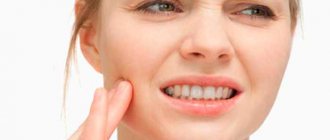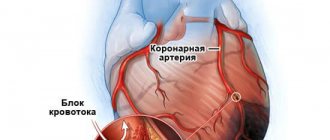The appearance of blood in the mouth when brushing teeth can be observed for various reasons - from using an overly hard brush to an increased tendency of the gums to hemorrhage. Hemorrhage is a pathological hemorrhage that occurs in any part of the body, both due to external influences and against the background of some dangerous internal diseases.
Due to the severity of the symptom and the complexity of diagnosis, you cannot do anything on your own when your gums are bleeding - you need to see a doctor and undergo a course of professional treatment.
Causes of bleeding gums
Many patients do not pay attention to bleeding gums until it begins to cause pain and discomfort in the mouth. Bleeding gums is a sign that signals the presence of various diseases in the body: the oral cavity, a separate organ or the whole organism. Self-medication and delaying a visit to the doctor can lead to dire consequences.
Dental diseases
- Gingivitis is an inflammation that develops in the mucous membrane of the gums and is manifested by redness or cyanosis, swelling and bleeding. In advanced cases, the symptoms of gingivitis can be quite intense and torment a person even in their sleep. This is a fairly common pathology that affects adults, adolescents, children and pregnant women.
- Periodontitis is a destructive periodontal disease caused by the destruction of the tissues surrounding and supporting the tooth. The inflammatory process involves the dental ligament, which is replete with blood vessels. Gradually it collapses, the teeth become loose and fall out. Bleeding gums occur at the slightest touch and even at rest.
stages of periodontitis development
- Periodontal disease is degeneration of the periodontal tissues, leading to the appearance of blood on the surface of the gums and loosening of the teeth.
- Tartar is dark stains on the outside or inside of the tooth near the gum.
- Stomatitis is manifested by inflammation of the oral mucosa and the appearance of blisters, erosions and ulcerations on its surface. This disease is a protective reaction of the body to various irritants.
- Traumatic damage to the gums during teething and extraction, as well as when the edges of a filling or crown overhang.
- Allergic reactions to dentures and fillings, improper installation of dentures.
General diseases
- Leukemia and some other cancers.
- Hemophilia is a rare disease caused by a disorder of coagulation or blood clotting, in which there are constant nosebleeds, bleeding gums, and spontaneous hemorrhages in the joints and internal organs.
- Alcoholism.
- People suffering from diabetes have very severe gum bleeding and pain.
- Diseases of the digestive system.
- Viral infection - herpes, cytomegalovirus, papillomavirus.
- Oral candidiasis.
- Autoimmune and allergic pathologies.
- Bite defect.
Along with the above, the cause of bleeding gums can be a deficiency of vitamins, nutrients and microelements:
Deficiency of calcium and vitamin C is the cause of scurvy, a disease caused by the fragility and fragility of blood vessels and manifested by swelling of the gums and their severe bleeding.
Vitamin K deficiency at the initial stage leads to bleeding gums and the appearance of hematomas at injection sites, and in severe cases - to the development of severe hemorrhagic syndrome with the appearance of blood in the urine, vomit, and feces.
Other causes of pathology include:
- Hormonal imbalance that occurs during pregnancy, puberty, menopause;
- Long-term use of certain blood thinning medications, for example, Aspirin;
- Poor nutrition, lack of foods containing vitamins B, C, K, E in the diet also lead to the development of pathology;
- Gums react by bleeding to improper and insufficient oral care;
- Hard pressure on teeth during hygiene procedures;
- Chemical irritation of the gums during smoking or when working with chemicals.
Why do my gums bleed?
The teeth only seem strong, and the gums seem reliable. In fact, they have quite a few enemies, any of which can cause problems with the oral cavity. Here are the most common causes of Bleeding gums bleeding gums:
- Tartar . If plaque is not removed regularly, including with the help of a dentist, day after day it will become thicker and harder and will one day turn into full-fledged tartar. Bacteria living in it are the main cause of gingivitis. And bleeding when brushing your teeth or using dental floss is the first symptom of this disease.
- Brushing your teeth too vigorously . Using an unsuitable brush or, for example, carelessly moving dental floss can damage the gums and cause slight bleeding. By the way, through such a scratch you can introduce an infection, which will provoke the further appearance of pink foam.
- Vitamin deficiency . Vitamins affect the condition of blood vessels (the strength of their walls) and blood clotting. In some cases, with a lack of vitamins, the vascular walls become thinner, and therefore bleeding can be caused by any, even slight, impact on the tooth or gum. Fortunately, with a nutritious diet you are unlikely to encounter such a problem.
- Diabetes (pre-diabetic conditions). This hormonal disease, among other things, reduces the gums' resistance to infections. Therefore, diabetics need to be very careful about oral hygiene.
- Pregnancy or taking certain hormonal contraceptives . Changes in hormonal levels Estrogen and progestin again affect the condition of the gum tissue: it swells more easily, becomes more loose and, as a result, less resistant to damage.
- Excessively rigid installation of prostheses . Dental dentures are one of the most common causes of gingivitis. If you have any orthopedic structure in your mouth, hygiene procedures must be especially thorough and regular.
- Internal diseases . Blood on a toothbrush can be a symptom of much more unpleasant ailments than gingivitis. In particular, this is how blood clotting disorders, gastritis, liver cirrhosis and even HIV manifest themselves. But we hope this is not your case.
Symptoms
Bleeding gums are a symptom of oral diseases: gingivitis, periodontitis and periodontal disease.
Gingivitis is an inflammation of the oral mucosa without compromising its integrity and is manifested by pain, hyperemia and swelling of the gums, the appearance of blood and plaque in the mouth. Deep gaps often form between the teeth and gums, the teeth begin to loosen, and salivation increases. Patients have a feeling that their gums are “sagging.” Gingivitis often develops during teething and replacement of teeth.
Periodontitis is characterized by the formation of periodontal pockets , the size of which varies from small to very large. They usually discharge pus. In advanced cases, teeth become loose and fall out. Periodontitis is accompanied by severe bleeding of the gums, impaired taste, and itching of the gums. In this case, the general well-being of patients is not affected; weakness and hyperthermia may be observed.
If bleeding gums occurs against a background of weakness, fever and is accompanied by the appearance of bruises on the body, prolonged and heavy menstruation, and nosebleeds, you must consult a specialist as soon as possible, who will conduct a comprehensive examination and identify the underlying disease.
How to help a child?
Children constantly experience changes in their bodies, some processes are replaced by others. It all starts with the eruption of the first tooth, and bleeding of the gums in children is quite common, since soft tissues are particularly sensitive. At the same time, regeneration also occurs at an accelerated rate.
The condition of the gums in children reflects the general health of the body; problems that arise indicate the presence of systemic diseases. The most common are: stomatitis, gingivitis, periodontitis, and the most serious: gum atrophy, periodontal disease and other pathologies.
If you see that your child’s gums are bleeding when brushing their teeth, you should immediately contact a specialist for help. Other signs of the development of pathological conditions are: bad breath, bright red color of soft tissues, deep grooves at the border with the teeth.
Most often, bleeding gums in children are caused by gingivitis. The main reason is insufficient hygiene, as a result of which bacteria provoke the development of inflammatory processes. Other symptoms: gum redness and swelling, pain when brushing teeth and while eating.
If you have to wait some time before a specialist arrives, think about how you can alleviate the child’s condition. For example, buy a mouthwash at the pharmacy that is designed specifically for children, or prepare your own decoction (from chamomile, sage, witch hazel). Take care of your diet, remove everything that is excessively hot, cold and hard.
Bleeding gums during pregnancy
Pregnant women often have bleeding gums. Almost every second expectant mother faces a similar problem. This can be easily explained by the processes occurring in her body: a hormonal explosion is manifested by increased sensitivity of the gum vessels, their looseness and inflammation.
Bleeding gums, which often occurs during pregnancy, usually disappear on their own after childbirth.
The disease is manifested by swelling, redness, soreness and hypersensitivity of the gums, difficulty chewing food. To get rid of such phenomena, it is necessary to relieve inflammation and neutralize dental plaque.
A comprehensive examination of a woman at the stage of pregnancy planning includes an examination by a dentist and helps prevent the development of the disease in the future.
What are the common causes of gum bleeding?
General causes affect the entire vascular system of the body. A symptom such as bleeding from the gums is combined with other bleeding (nasal, uterine, intestinal), various types of skin rashes, joint pain, and hemoptysis.
Signs indicate that a significant number of small vessels (capillaries) are bleeding. It can be very difficult to stop such profuse bleeding; general treatment with the use of potent drugs is necessary.
Vascular pathology can be caused by:
You can also read: How to stop bleeding from a cut
- hormonal changes in the body in adolescents, women during pregnancy, and diabetes;
- lack of vitamins C, P, B12, folic acid in food or impaired absorption and synthesis when the intestines and liver are damaged (observed in hepatitis and cirrhosis, in alcoholics, smokers, drug addicts);
- long-term treatment with certain drugs prescribed to patients with ischemia of the heart and brain, rhythm disturbances, hypertension (medicines that can reduce blood clotting);
- tartar - formed at the gum border through the interaction of digestive enzymes with surface plaque, sharp edges irritate and injure the mucous membrane;
- inflammatory diseases (gingivitis, periodontitis and periodontal disease) - timely treatment is required, otherwise there is a risk of losing the affected tooth;
- tooth extraction surgery - usually the bleeding from the socket stops after 2 hours, natural tissue defense mechanisms thrombose the wound surface, if bleeding is prolonged or a reoccurrence occurs, you should consult a dentist;
- pyogenic granuloma - a benign growth of the gums, similar to a tumor, causing persistent repeated bleeding;
- angiomatous epulis - a tumor-like growth of connective tissue on the gums, occurs at any age, more often in women, and can be either benign or malignant.
Epulis in the lower jaw area on the right can be a hard or soft formation
Common diseases that can cause bleeding gums:
- leukemia at the stage of thrombocytopenia;
- congenital forms of hemophilia;
- lesions of viral etiology (group of hemorrhagic fevers, herpes, cytomegalovirus infection, papilloma virus, measles, influenza);
- diseases of the skin and mucous membranes (lichen planus, systemic lupus, pemphigus, capillary toxicosis).
Bleeding gums in children
The etiological factors of bleeding gums in a child are:
- Infectious diseases,
- Teething,
- Hypo- and vitamin deficiency,
- Decreased immunity
- Failure to comply with personal hygiene rules, leading to the accumulation of plaque.
Children with signs of gingivitis should not consume hot or cold food or water. A balanced diet and vitamin therapy will help strengthen the immune system. It is recommended to lubricate inflamed gums with anti-inflammatory dental gels - “Cholisal”, “Metrogil Denta”, and rinse your mouth with antiseptic solutions and black tea. To remove plaque and tartar, you should visit a children's dental clinic for professional teeth cleaning. The dentist will examine the sick baby and make the necessary appointments.
Drug treatment
The choice of how to treat bleeding from the gums during brushing is influenced by the systematic nature of the phenomenon, accompanying symptoms, and the provoking cause. The main therapy is ointments and gels, rinses, medicated toothpaste. It is possible to supplement with vitamin complexes and antibacterial drugs.
Ointments and gels for bleeding gums
These forms of medication are applied directly to damaged tissue after cleansing the mouth and rinsing up to 2 times a day, then rub in with a clean finger. The most recommended and effective drugs are Metrogyl denta (Dentamet, Metrodent, Asepta balm), Kamistad, Cholisal, Elugel.
Metrogyl and Cholisal
If the gums are damaged, Solcoseryl dental paste is also prescribed, which has regenerating and analgesic properties.
In the absence of an allergic reaction to bee products, you can use Asepta gel with propolis. It reduces signs of inflammation and bleeding and is used for preventive purposes 2-3 times a year in courses.
These ointments and gels help eliminate the causes of bleeding gums - dental inflammation and infectious processes. These remedies reduce tissue swelling, bleeding, and pain.
Rinse aids
A mandatory measure to treat bleeding gums when brushing your teeth is to use a rinse.
Solutions used in courses of up to 10–14 days have anti-inflammatory, wound-healing, antimicrobial effects:
- Miramistin;
- Chlorhexidine;
- Rotokan;
- Romazulan;
- Furacilin;
- Soda and/or salt solution;
- Chlorophyllipt alcohol;
- Stomatophyte.
For preventive purposes, you can constantly use non-drug rinses aimed at eliminating bleeding gums. The following brands are available in pharmacies and stores:
- Forest balm;
- Colgate;
- Splat;
- Asepta Periodontal;
- ROCS;
- The president;
- Fluorodent;
- Listerine;
- Sensodyne;
- Lakalut et al.
Toothpastes for bleeding gums when brushing teeth
If gum bleeding occurs when brushing your teeth, the first thing to do is to replace the usual paste used with a therapeutic or prophylactic series. The box will say "anti-bleeding." They are used twice a day.
The most affordable pastes available in stores and pharmacies:
- Asepta;
- Sensodyne;
- Parodontax F;
- Splat Active;
- Forest balm;
- Lakalut Active et al.
Important! If your gums bleed while brushing your teeth, it is not advisable to use whitening toothpastes.
Treatment for bleeding gums
Bleeding gums can lead to tooth loss. If you find blood on your toothbrush or toothpaste, you should immediately contact your dentist, who will give recommendations to restore the condition of your gums. If necessary, he will carry out sanitation of the oral cavity: he will cure caries, remove tartar, and then directly proceed to the treatment of the underlying pathology. For this, patients are prescribed anti-inflammatory gels, physiotherapeutic procedures, and in advanced cases, antibiotics. Even minor bleeding and swelling of the gums must be treated . Otherwise, the disease will progress and eventually become chronic.
Diet therapy
When bleeding gums, patients are advised to follow a balanced, fortified diet containing foods and dishes with sufficient amounts of vitamin C, which prevents bleeding gums and increases the overall resistance of the body. Vitamin C is found in large quantities in vegetables, herbs, berries and fruits.
Products containing B vitamins strengthen tooth enamel, gums, and promote rapid healing of wounds and mouth ulcers. These include meat dishes from lamb or beef, eggs, buckwheat, oatmeal, apples, garlic, almonds, and milk.
Vitamins E, K and PP prevent the development of gingivitis or stomatitis, have a wound-healing and soothing effect on the gums, and prevent bleeding gums.
Persons suffering from bleeding gums are advised to exclude from the diet spicy, salty and sour foods that irritate the oral mucosa, limit the consumption of carbohydrates and include in the daily menu foods with a high content of calcium and vitamins C, B, E, K, PP. Following a diet significantly increases the effectiveness of treatment of pathology.
Drug treatment
- Dental gels are effective remedies for bleeding gums. Their components easily and quickly penetrate the mucous membrane and have a therapeutic effect: antimicrobial, anti-edematous, anti-inflammatory. The most common among them are: “Cholisal”, “Solcoseryl”, “Dental”, “Asepta”. They have a bactericidal, analgesic, cooling effect and act only on the surface of the gums, without penetrating deep into the tissues. All these drugs do not irritate the mucous membrane and act immediately after application.
- Dental ointments – “Apident-aktiv”, “Metrogil Denta”, “Kamistad”.
- Severe forms of the disease are treated with antibiotics from the group of cephalosporins, macrolides, penicillins - Erythromycin, Amoxicillin, Ampicillin, Cephalexin.
- For severe pain in the gums, painkillers are used.
- Patients are prescribed immunomodulators and multivitamins that improve the condition of the gums. Deficiency of vitamins A, B, C, E is manifested by weakness, looseness and pallor of the gums. Vitamin therapy is an essential part of the comprehensive treatment of gingivitis, periodontitis and other dental diseases. Immunostimulants – “Schisandra tincture”, “Immunal”, multivitamins – “Alphabet”, “Vitrum”.
- Vitamins for the treatment of periodontal disease and other oral diseases “Dentovitus”, “Kaltsinova”, “Calcium D3 Nycomed”. "Ascorutin" strengthens the walls of blood vessels and reduces bleeding gums.
- Homeopathic remedies - “Beplex”, “Polyminerol”, “Vokara”. They improve metabolism, replenish the deficiency of essential vitamins and minerals in the body, and have a disinfectant, immunostimulating and antimicrobial effect.
- Tartar removal is carried out in a clinic by a dentist. The doctor touches the surface of the deposits with the tip of the ultrasonic device, and the ultrasonic waves destroy the interaction between the stone and the tooth enamel.
- Rinsing the mouth after meals with Chlorhexidine, Miramistin, Tantum Verde, Chlorophyllipt or any other solution with an antiseptic.
- "Rotokan" is an antiseptic for topical use that restores damaged areas of the mucous membrane and stops bleeding. Gauze turundas are moistened in the solution and inserted into the gum pockets. You can use a mouth rinse.
Physiotherapy
Gum diseases are an indication for physiotherapeutic treatment methods in order to prevent the spread of the inflammatory process and get rid of it in all possible ways. Physiotherapy accelerates the healing and restoration of gums by improving their blood supply and cellular metabolism. Patients are prescribed ultraviolet irradiation of inflamed gums, electrophoresis, massage, treatment with current, oxygen, light therapy, vacuum therapy:
- In dentistry, several types of massage are performed - finger, hardware, hydromassage. Douching the mouth with a special device for massaging the gums will help improve blood supply to the gums, relieve swelling and pain.
- Using low frequency current, various medications are introduced into the human body. Electrophoresis is used in complex therapy of gingivitis, pulpitis, periodontitis to reduce pain and restore gums. Electrophoresis is carried out with anesthetics - novocaine or analgin and acids - nicotinic, aminocaproic, ascorbic.
- Balneotherapy has not only a local effect on the oral mucosa, but also a general strengthening effect on the entire body.
- Ultraviolet irradiation on the gum area destroys pathogenic microbes and promotes cell growth and renewal.
Physiotherapy in dentistry gives excellent positive results, does not take much time - only 5 procedures, does not last long and is absolutely painless.
ethnoscience
There are many traditional medicine recipes to get rid of bleeding gums. To eliminate the symptoms of pathology, various herbal decoctions are used, which stimulate the immune system and have anti-inflammatory and antimicrobial effects.
The most common folk recipes are:
- Tinctures of sage, St. John's wort, chamomile, calendula.
- Blueberry decoction and oak bark decoction.
- To combat tartar, you should drink black radish juice.
- It is useful to clean and massage your gums with sea salt gently, without damaging your tooth enamel.
- Rinse the mouth and rinse periodontal pockets with hydrogen peroxide or soda solution.
- Horseradish juice with the addition of wine improves the condition of the gums.
- A cotton swab dipped in an infusion of medicinal herbs or hydrogen peroxide is applied to the sore spot for twenty minutes.
- The calamus rhizome is crushed and chewed slowly several times a day.
- The mouth is rinsed with sunflower oil and then spat out.
Folk remedies are not able to completely cure the pathology; they can only relieve discomfort. Only a trip to the dental clinic will allow teeth to become loose and fall out. The dentist will give individual recommendations regarding nutrition, explain the rules of brushing teeth and using dental floss, prescribe traditional medications, and in cases of extreme necessity, select the appropriate method of surgical treatment.
Video: folk remedies against bleeding gums
What to do at home if your gums bleed heavily. Review of folk remedies
If your gums are bleeding and you have to postpone a visit to the dentist, traditional methods of treatment can help you cope with this problem.
- Herbal infusions.
Chamomile, oak bark, sage and calendula help relieve inflammation in the oral cavity, as well as rapid epithelization of microcracks. Plant substances are infused in a water bath for 15–20 minutes. You should rinse your mouth with the resulting infusion every 3 hours.
- Saline solution.
If your gums do not bleed too much, table salt can help eliminate dental disease. Add 1 tablespoon of salt to a warm glass of water. Intraoral rinses with a saline solution should be carried out at least 3 times a day.
- Blueberry.
Chopped berries (35–40 g) are poured into a glass of hot water. The infusion must be kept for at least 10 hours. The mixture is used in the form of lotions and compresses up to 7 times a day. Blueberry juice is indicated for intraoral rinsing 1-2 times a day.
Prevention
Preventive measures to prevent bleeding gums:
- Periodic medical examinations at the dentist.
- Follow your dentist's instructions for caring for your gums at home.
- Maintain personal hygiene.
- Sanitation of foci of chronic infection - timely treatment of caries.
- Fighting bad habits - smoking aggravates gum problems.
- A complete, balanced diet rich in vitamins and minerals with a limit on sugar-containing foods.
- A toothbrush with medium-hard bristles should be chosen by those with normal teeth without any problems. It is necessary to change your toothbrush to a new one every three months to prevent the accumulation of pathogenic microorganisms on it. Microbes multiply more intensively on brushes with natural bristles. This must be taken into account when the first signs of inflammation appear.
- To control bleeding, gently wipe the gums with a swab dipped in ice water.
If there is bleeding, it is forbidden to use whitening toothpastes, as they only increase irritation and inflammation of the gums.
You should brush your teeth at least 2 times a day, and ideally after every meal. The process of brushing your teeth should last from 5 to 7 minutes. In this case, you should make not only horizontal movements with the brush, but also vertical ones, which allow you to remove food particles from the interdental spaces.
A healthy, snow-white smile is a sign of beauty and health. Once you find traces of blood on your toothbrush, you should immediately contact your dentist. By regularly observing all preventive measures, you can save your gums from inflammation and bleeding.
Symptoms
Signs of gum problems include:
- change in gum color to bright red;
- bleeding both during and after hygiene procedures;
- pain, itching, discomfort in the gums;
- severe pain when eating solid foods;
- excessive accumulation of fluid in tissues (edema);
- the appearance of periodontal pockets;
- tooth mobility;
- the presence of tartar on the surface of the teeth, plaque of an unnatural color;
- unpleasant odor from the mouth;
- gum defect (recession).
How do mouthwashes work?
Complex treatment of gingival bleeding is not complete without rinsing the mouth with medicinal solutions. Patients often ask us how to rinse gums that are bleeding. If you want to recover quickly, then rinse your mouth with either ready-made rinses or self-prepared herbal decoctions and tinctures. Great for rinsing gums when bleeding:
- PresiDENT;
- Lacalut;
- Silka.
If you want to try medicinal herbs, the following have antiseptic and anti-inflammatory effects:
- chamomile;
- St. John's wort;
- Oak bark;
- yarrow;
- sage.
If you don’t have the right product on hand, you can prepare a solution from baking soda (one teaspoon per glass of boiling water).
What to do if the gums under the denture bleed
It is normal to experience some pain and swelling after implant placement. But, if the gums near the tooth bleed for a long time or inflammation begins after wearing a bridge for a long time, you should consult a dentist. He establishes the cause and decides whether to replace the prosthesis. In case of material rejection or severe allergies, it is necessary to conduct special sensitivity tests before further work.
After removing the crown, it may be discovered that there is an infection in the intergingival space. In this case, a comprehensive cleaning with antiseptic drugs is urgently carried out, the patient takes antibiotics and undergoes a whole course of treatment. Only after complete healing of the soft tissues and thorough removal of tartar can prosthetics be repeated. To do this, a new implant is made taking into account all the structural features of the patient’s jaw.
Wrong choice of hygiene products
Choosing the wrong brush can also cause problems; for most people it should be a medium hard brush. A brush that is too soft does not clean the mouth; a brush that is too hard can injure the gums, causing bleeding. Objects that can damage soft tissue include toothpicks. Most dentists have a negative attitude towards the constant use of wooden and plastic toothpicks as hygiene products and advise using dental floss to clean the interdental spaces.
Special ointments
Ointment and gel, although many combine them into one concept, are not the same thing. The ointment has a fatty base and almost does not seep into the mucous membranes of the gingival tissues, therefore it does not linger on the gums for a long time. The gel, on the contrary, is well absorbed and lasts a long time. Ointment for treating gum tissue against bleeding is not suitable - it gives an effect only when applied externally, but the gel will be very effective.
Hydrogen peroxide
This simple and cheap remedy effectively disinfects gums, removes plaque, stops bleeding and slows down inflammatory processes, healing wounds and microcracks in gum tissue. Three percent peroxide acts gently without damaging tooth enamel. Sometimes it is even used instead of toothpaste. But if tooth enamel is thinning and teeth are hypersensitive, peroxide should not be used, otherwise it can harm your teeth.
Proper nutrition
What else can you do at home to strengthen your gums and no longer experience soreness, swelling and bleeding? You need to improve your diet and ensure that your body regularly receives the vitamins and minerals necessary for oral health. In this regard, pay attention to foods rich in the following nutrients:
– Vitamin C. It not only eliminates inflammatory processes in the body, but also strengthens the immune system, increasing its resistance to infections. You can find this vitamin in citrus fruits, currants, sauerkraut, spinach and parsley.
– B vitamins. These substances promote tissue restoration and reduce the likelihood of injury to the gingival surfaces. For this, it is extremely useful to eat green apples, chicken eggs, onions and garlic.
– Vitamin E. This vitamin accelerates the process of cell regeneration, and therefore will be very useful in solving this problem. In this regard, it is necessary to diversify your diet with butter and sunflower oil, corn, dairy products and lettuce.
- A nicotinic acid. It is responsible for the elasticity of blood vessels, and therefore is a valuable element in the prevention of bleeding gums. You can saturate your body with “nicotine” by eating beets, beans and buckwheat, pineapples and liver.
– Vitamin K. This vitamin ensures normal blood clotting, which means it is simply necessary for a person who suffers from bleeding gums. To do this, regularly add cabbage, bananas, rose hips and pumpkin to your diet.











